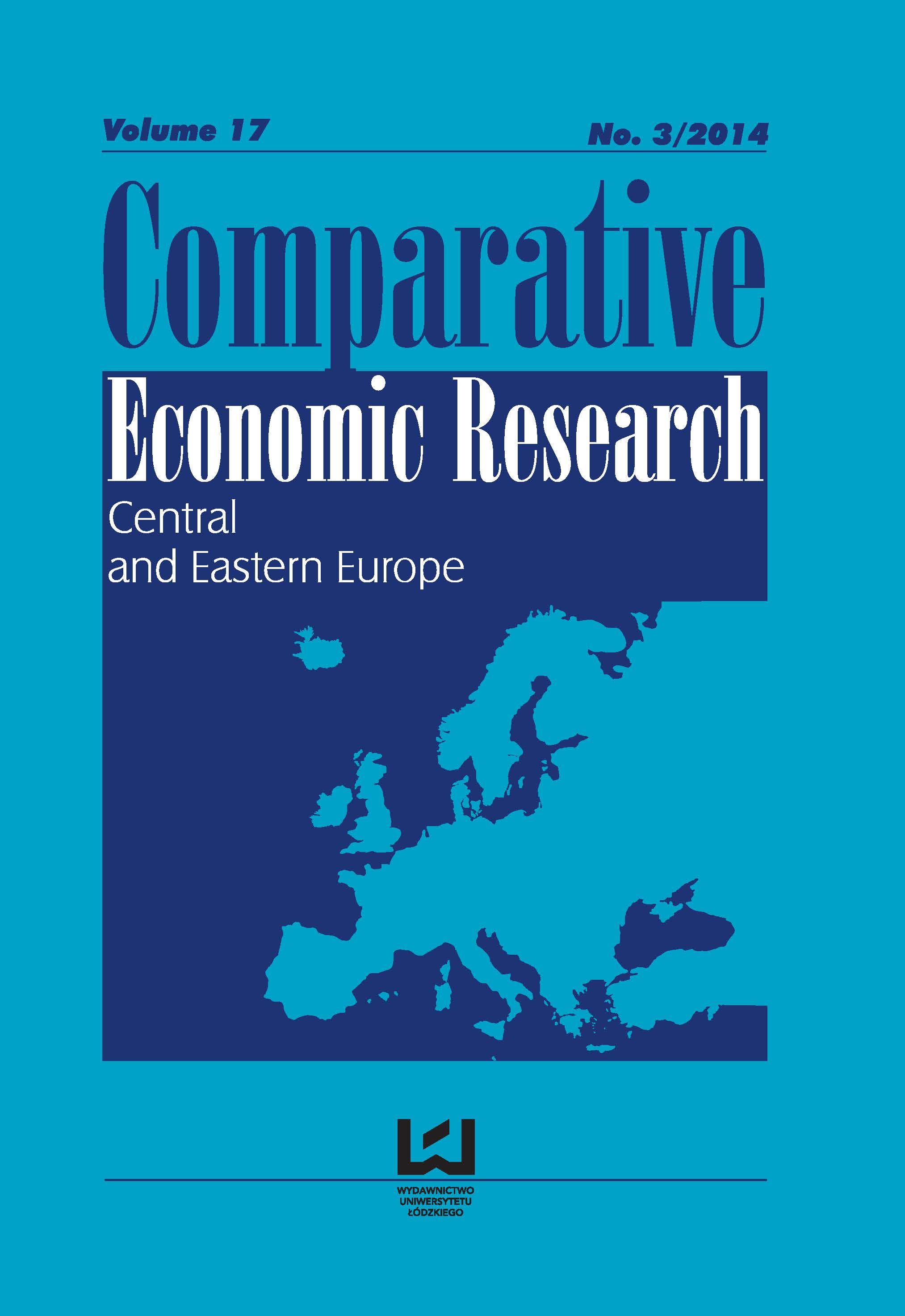Capital Movements Between the European Union and Turkey Within the Integration Processes
DOI:
https://doi.org/10.2478/cer-2014-0021Keywords:
European Union, Turkey, integration processes, capital movements, foreign direct investmentAbstract
The institutional model used in the integration process between the European Union (EU) and Turkey was that of establishment of a customs union under an Association Agreement. In the context of the difficulties that have occurred in the membership negotiations between the EU and Turkey, the question arises whether real economic integration between them has gone further than that achieved at the stage of a customs union. Free movement of capital, constituting one of the so-called four fundamental freedoms within the single European market, is the subject of examination in this paper. The obligations of Turkey, as an EU candidate country, in the field of free movement of capital are more demanding under the EU scheme of liberalization of capital flows than within the OECD, which is regulated by the Code of Liberalisation of Capital Movements and the Code of Liberalisation of Current Invisible Operations. Real economic integration between the EU and Turkey requires further liberalization of the free movement of capital. While Turkey encourages the inflow foreign direct investment using a generous package of incentives, the role of FDI in its economy still remains moderate.
Downloads
References
Additional Protocol (1972), Additional Protocol and Financial Protocol signed on 23 November 1970, annexed to the Agreement establishing the Association between the European Economic Community and Turkey and on measures to be taken for their entry into force - Final Act – Declarations , OJ L293/4, 29.12.1972
Google Scholar
Aksu K. (2012), A historical Background to Turkey-Europe Relations [in:] K. Aksu (ed), Turkey- EU Relations: Power. Politics and the Future, Newcastle upon Tyne, eBook
Google Scholar
Balassa B. (1962), The Theory of European Integration, Alen&Unwin, London
Google Scholar
CEIC data basis
Google Scholar
EC (2013), Commission Staff Working Document. Turkey 2013 Progress Report. Accompanying the document Communication from the Commission to the European Parliament and the Council. Enlargement Strategy and Main Challenges 2013-2014, Brussels, 417 final
Google Scholar
Ekinci E. (2006), Foreign direct investment, [in:] P.H. Rosenblatt, M. Terterov (eds.), Turkey: A Business and Investment Review, GMB Publishing Ltd., Rosenblatt&Company, London
Google Scholar
Hakura (2006), Turkey’s accession to the European Union, [in:] P.H. Rosenblatt, M. Terterov (eds.), Turkey: A Business and Investment Review, GMB Publishing Ltd., Rosenblatt&Company, London
Google Scholar
Inglis K. (2011), Pre-accession and Accession Treaty Legal Practice: Insights and Lessons for the Future, [in:] H. Kabaalioglu, A. Ott and A. Tatham (eds), EU and Turkey: Bridging the Differences in a Complex Relationship, Economic Development Foundation- Publication No: 250, Istanbul
Google Scholar
Investment Incentives Turkey, http://www.incentives.gov.tr/index.cfm?saya=9B5670C6_dCC9
Google Scholar
Joseph J.S. (2012), EU Enlargement: The Challenge and Promise of Turkey [in:] F Bindi, Angelescu (eds.), The Foreign Policy of the European Union. Assessing Europe’s Role in the World, Brookings Institution Press, Washington D.C.
Google Scholar
Molle W., Morsink R. (1991), Intra-European Direct Investment, [in:] B. Burgenmeier, J.L. Mucchelli (eds.), Multinationals and Europe 1992. Strategies for Future, Routledge, London
Google Scholar
Molle W. (1995), Ekonomika integracji europejskiej. Teoria, praktyka, polityka, Fundacja Gospodarcza NSZZ "Solidarność”, Gdańsk
Google Scholar
Nas T.F. (2008), Tracing the Economic Transformation of Turkey from the 1920s to EU Accession, Martinus Nijhoff Publisher, eBook
Google Scholar
Nienhaus V. (1987), Aussenwirtschaftliche Integrationstheorie und die Integrationspolitik grosser Entwicklungslander-Gruppierungen, Duncker&Humblot, Berlin
Google Scholar
OECD, The Code of Liberalisation of Capital Movements and the Code of Liberalisation of Current Invisible Operations http://www.oecd.org)/daf/inv/investment-policy/codes.htm
Google Scholar
OECD (2002), Forty Years’ Experience With The OECD Code of Liberalisation of Capital Movements. Summary and Conclusions, http://www.oecd.org/daf/inv/investment-policy/2510947
Google Scholar
OCED (2011), OECD Code of Liberalisation of Capital Movements, Annex B, OECD Publishing, doi: 10.1787/9789264110779-en
Google Scholar
OECD (2012), OECD Economic Surveys: Turkey, OECD publishing, doi: 10.1787/eco-surveys- tur-2012-en
Google Scholar
OECD (2013), OECD International Direct Investment Statistics, Paris
Google Scholar
Pelkmans J. (1997), European Integration. Methods and Economic Analysis, Longman, Harlow, New York
Google Scholar
Rapoport C. (2011), EC-Turkey Customs Union and the WTO System, [in:] H. Kabaalioglu, A. Ott and A. Tatham (eds), EU and Turkey: Bridging the Differences in a Complex Relationship, Economic Development Foundation- Publication No: 250, Istanbul
Google Scholar
Takim A. (2010), Influences of Decree No. 32 on capital movements in Turkey: A theoretical analysis, ‘African Journal of Business Management’ Vol. 4(4), pp. 526-533, available online at http://www.academicjournals.org/AJBM
Google Scholar
Turkey –EU Relations, http://www.mfa.gov.tr/relations-between-turkey-and-the-european-u
Google Scholar
UNCTAD (2013), World Investment Report 2013, Global Value Chains: Investment and Trade for Development - Overview, New York and Geneva
Google Scholar
Downloads
Published
How to Cite
Issue
Section
License

This work is licensed under a Creative Commons Attribution-NonCommercial-NoDerivatives 4.0 International License.











